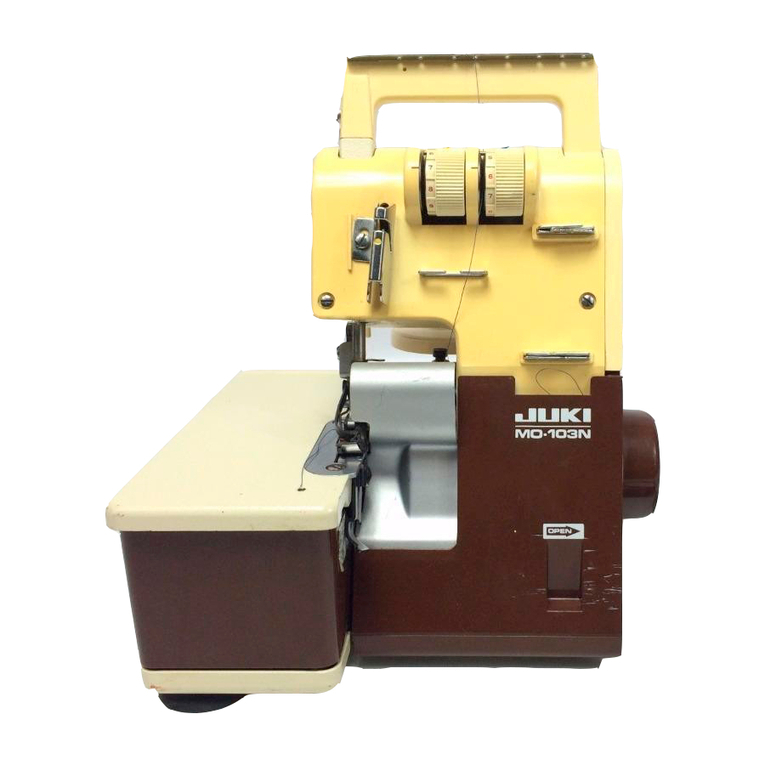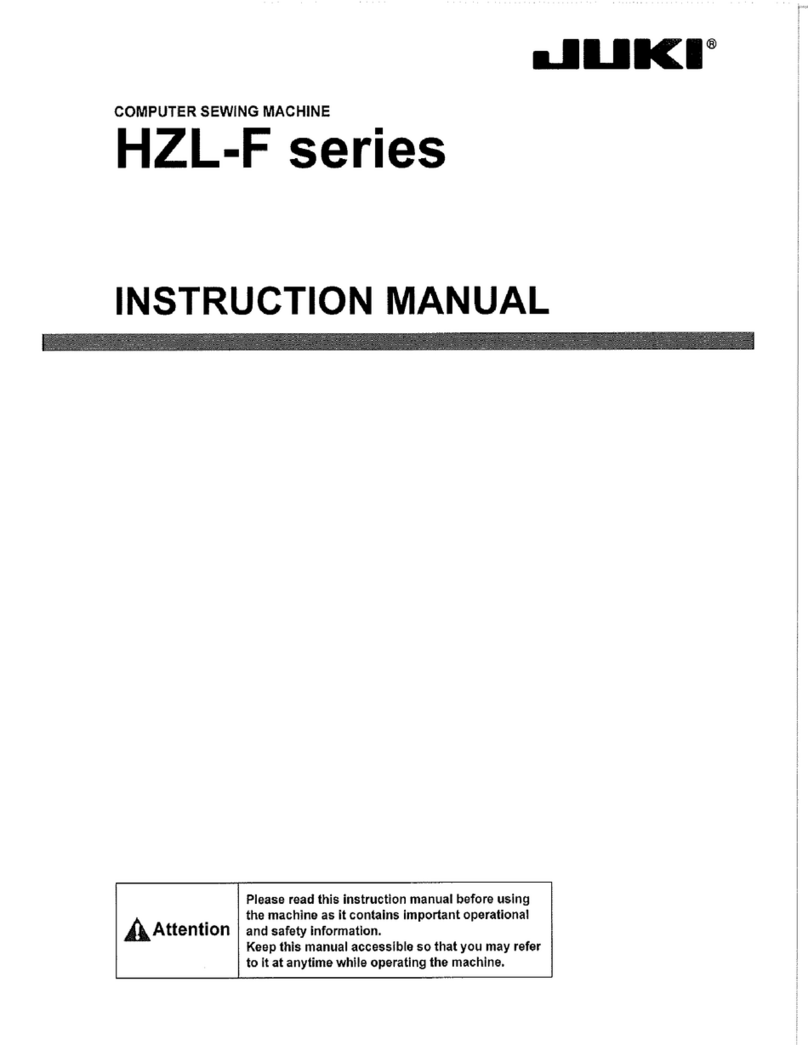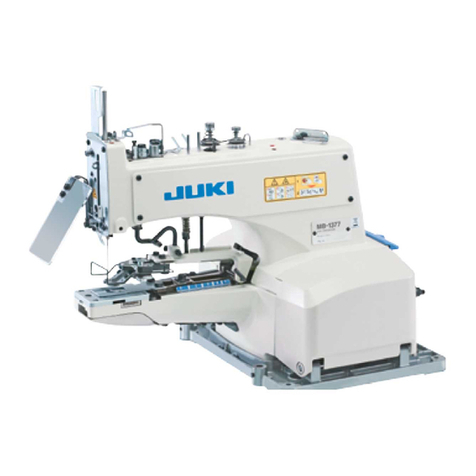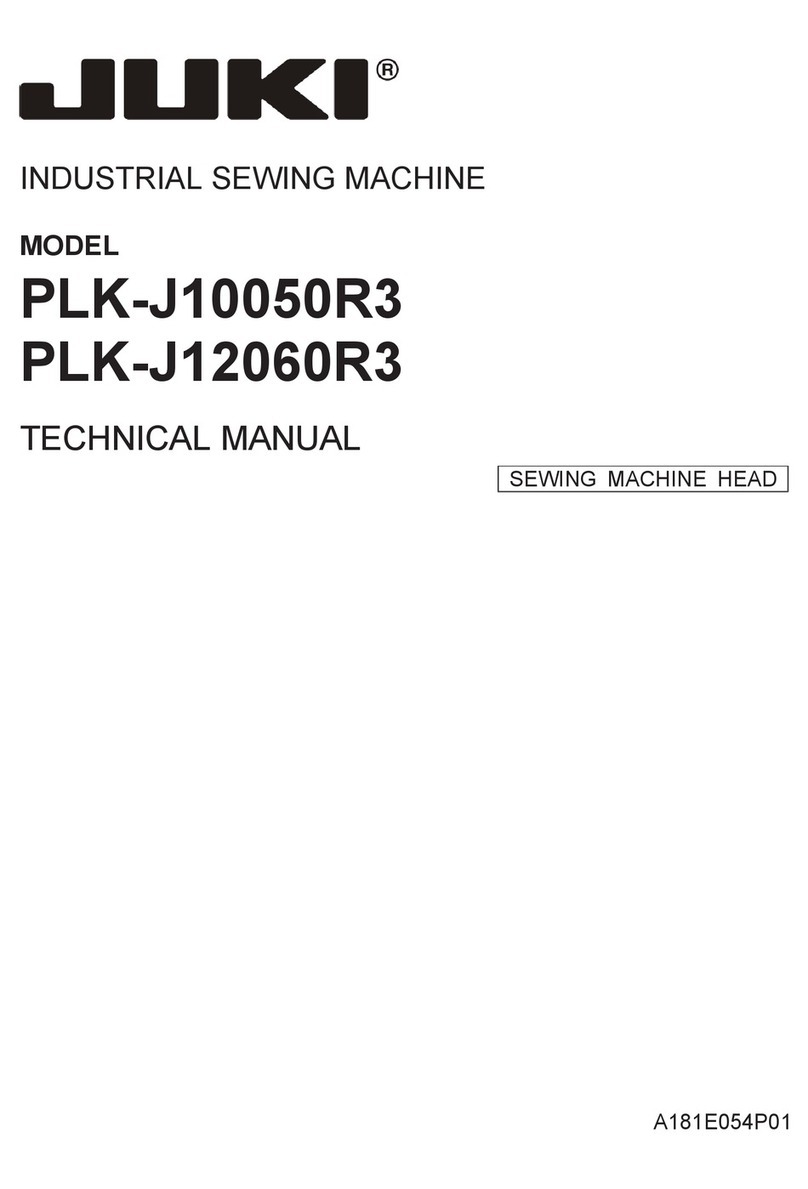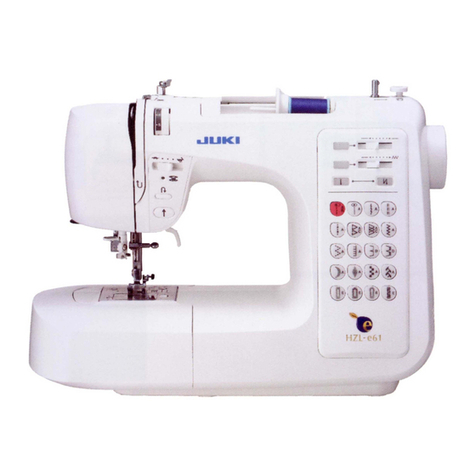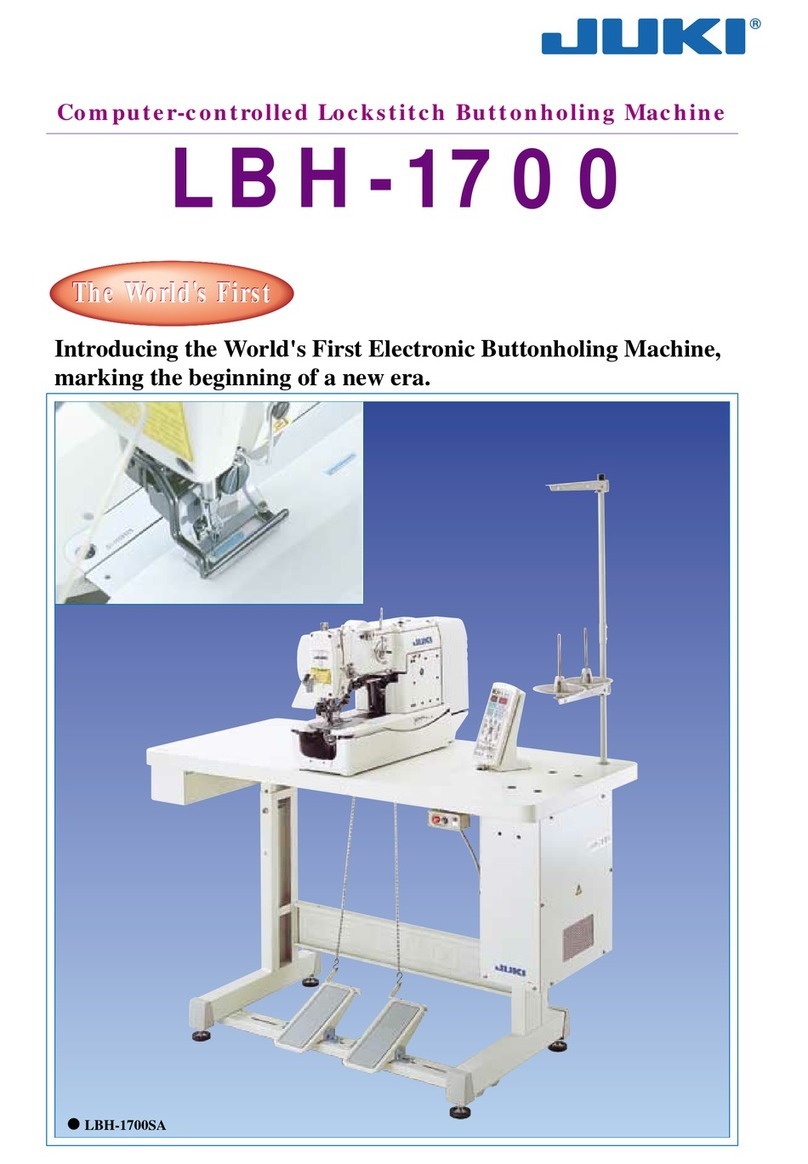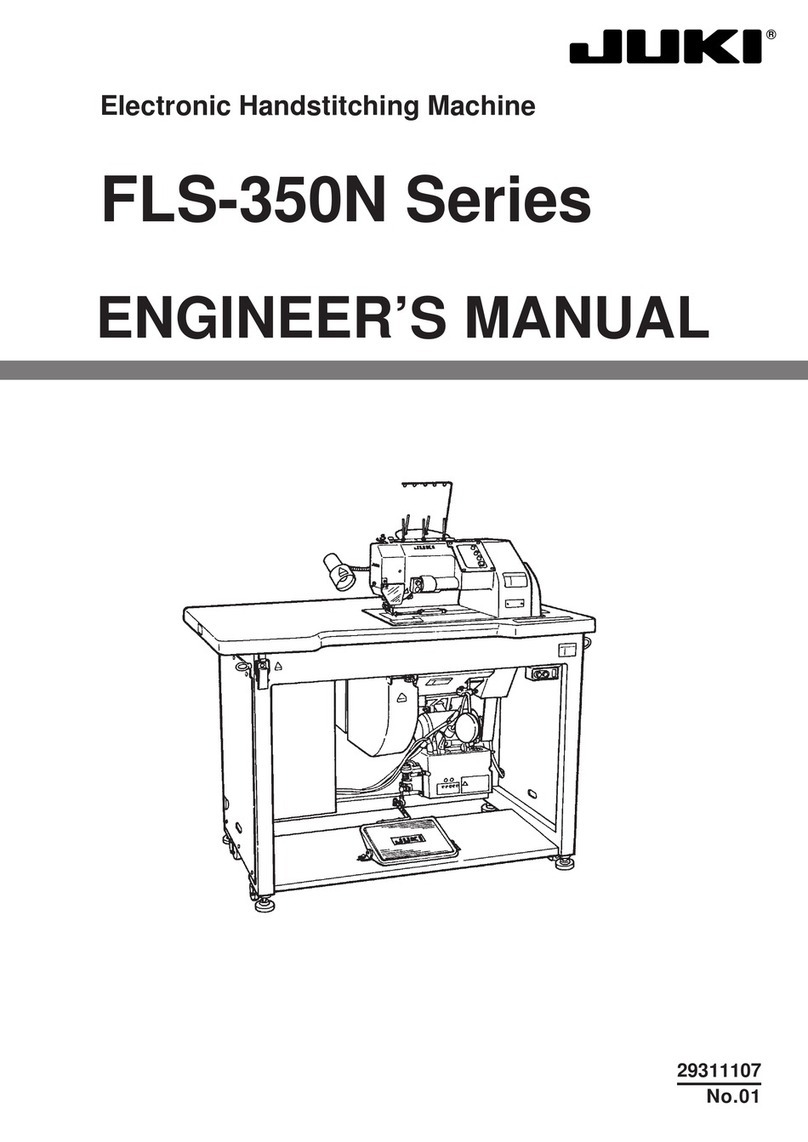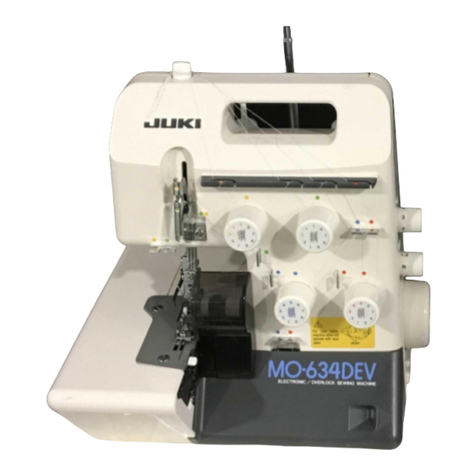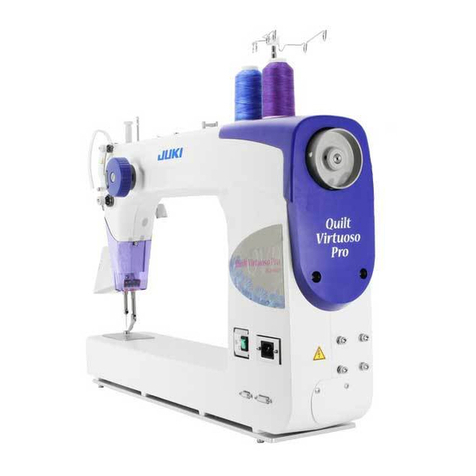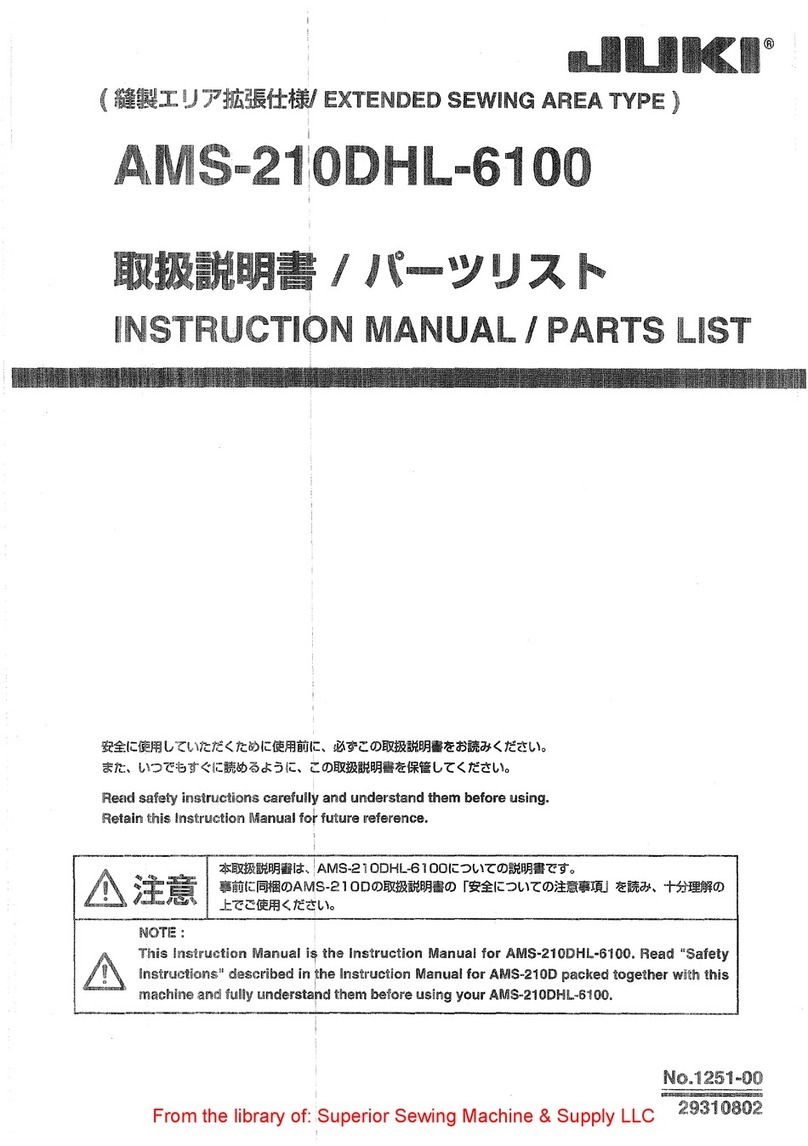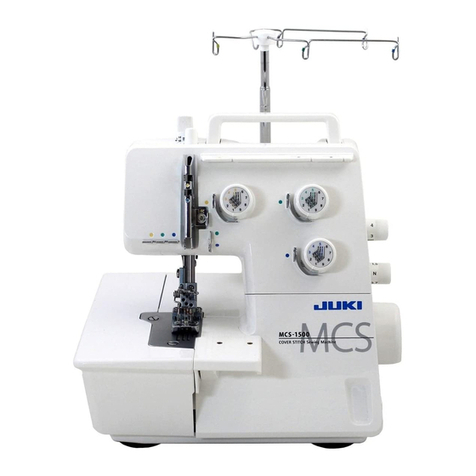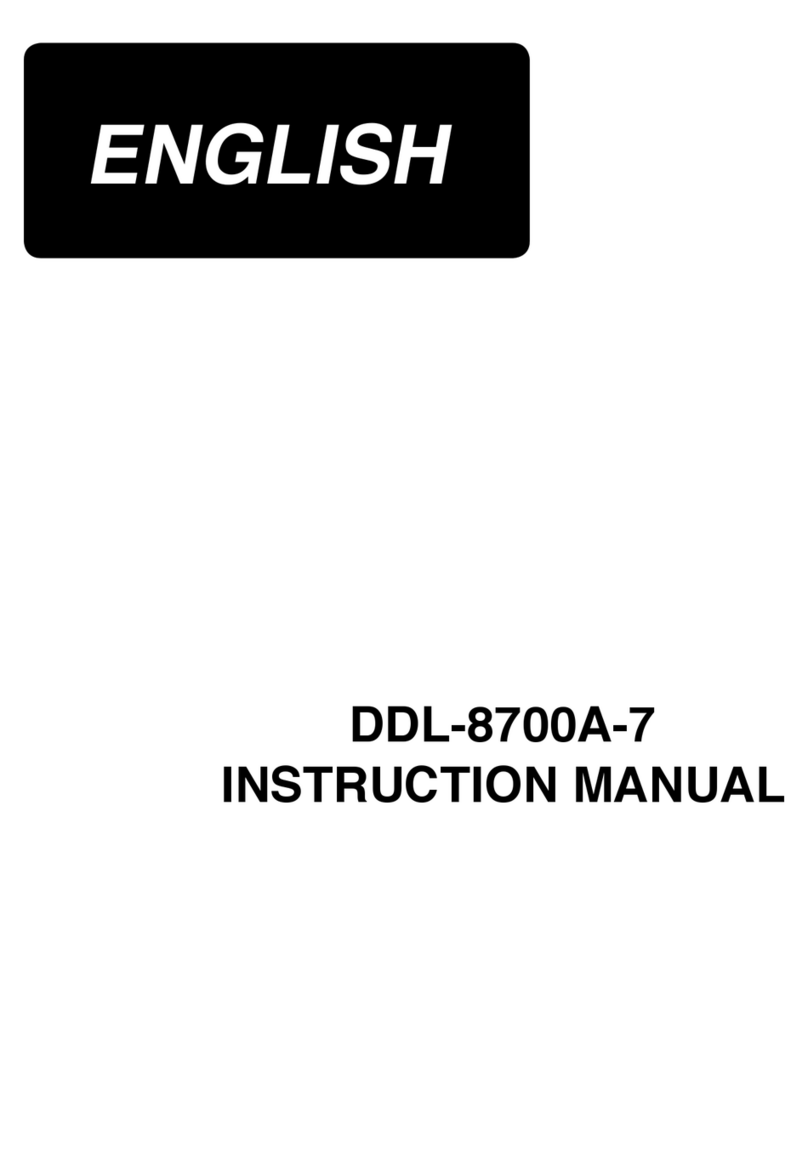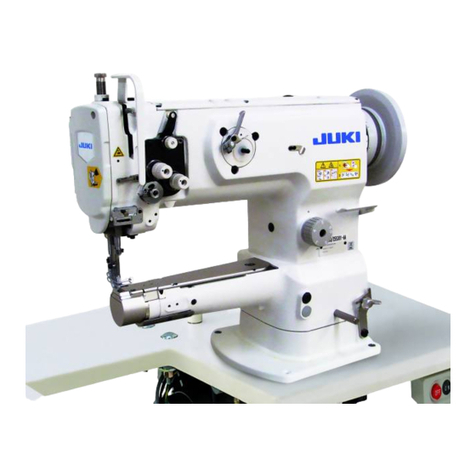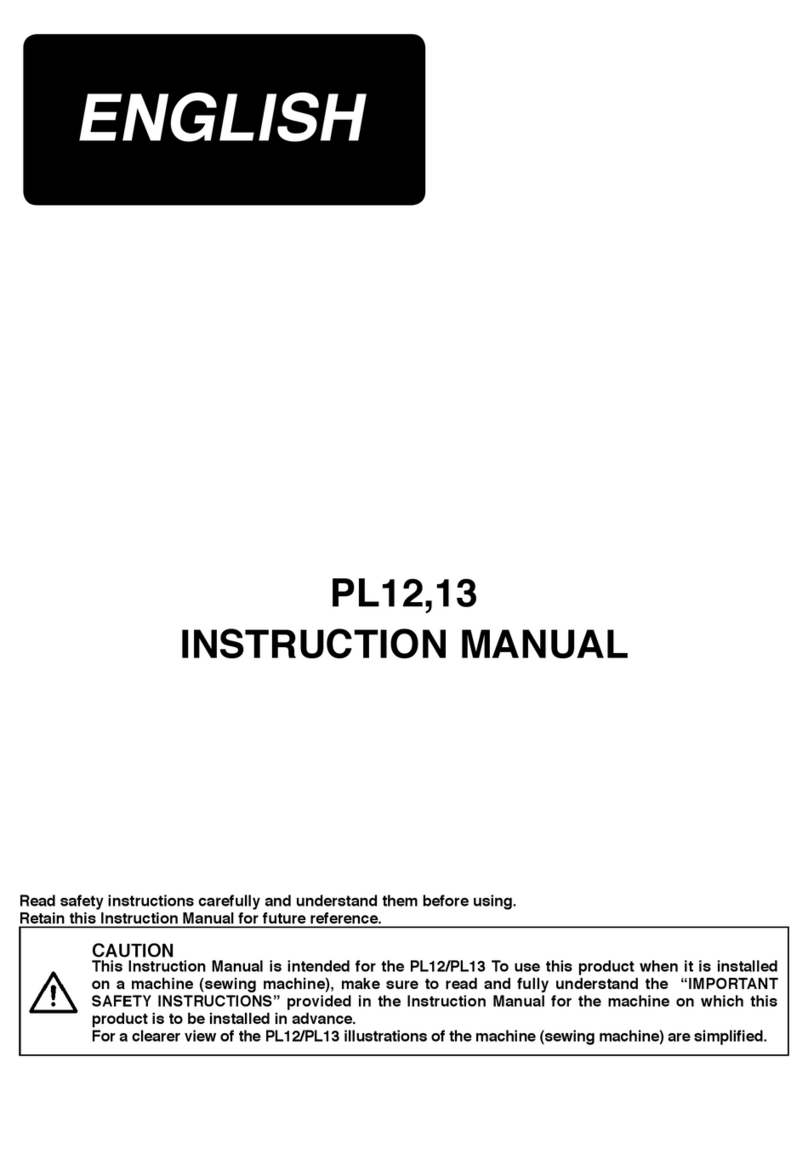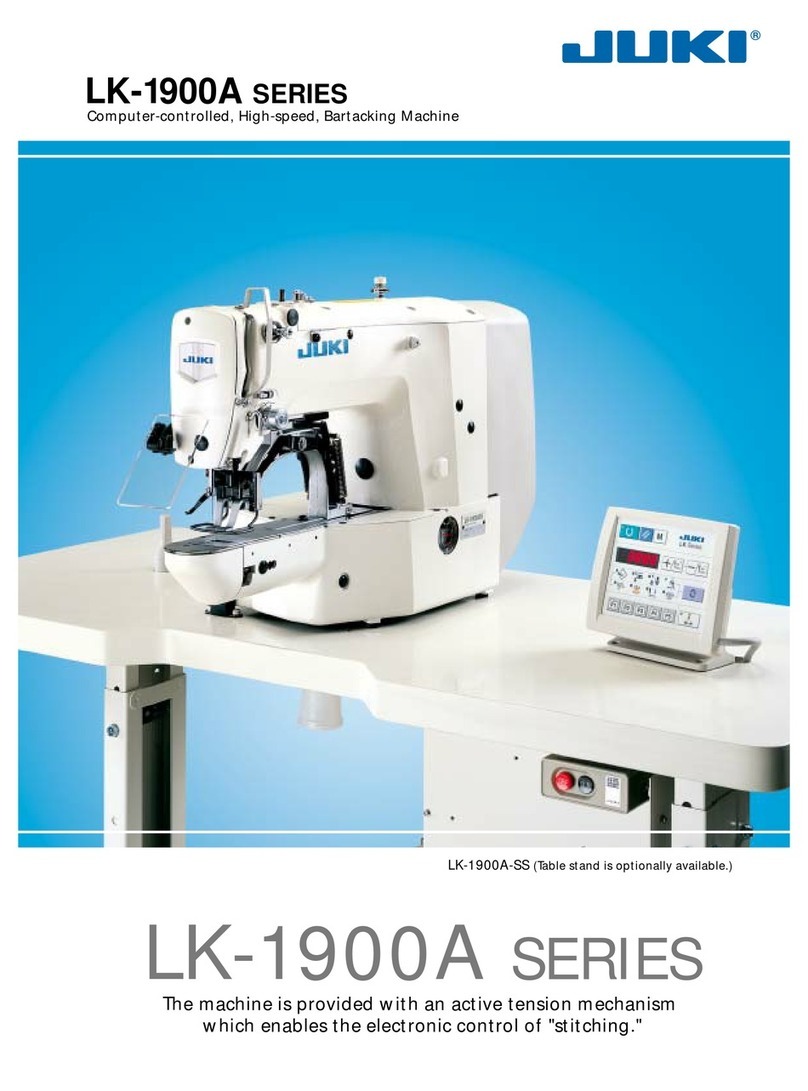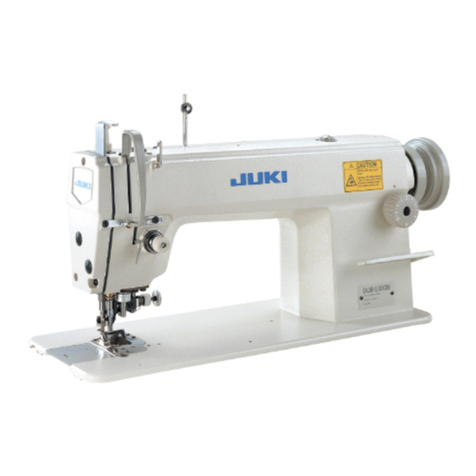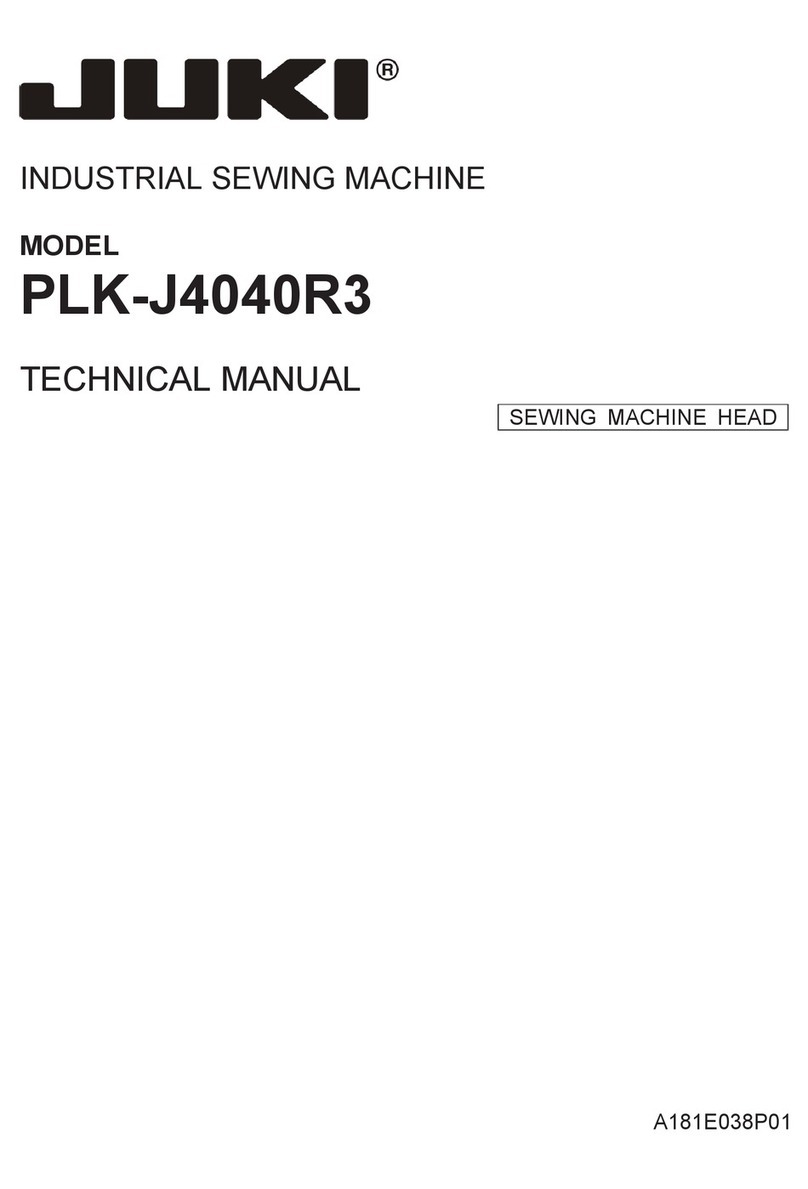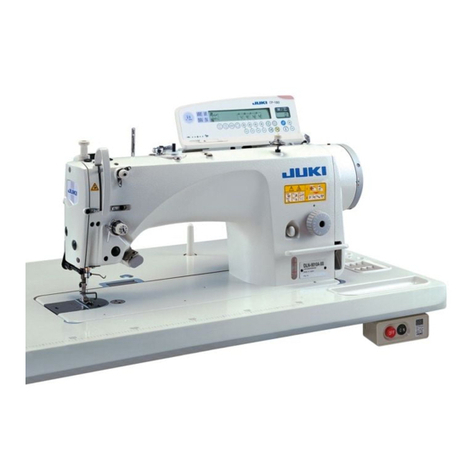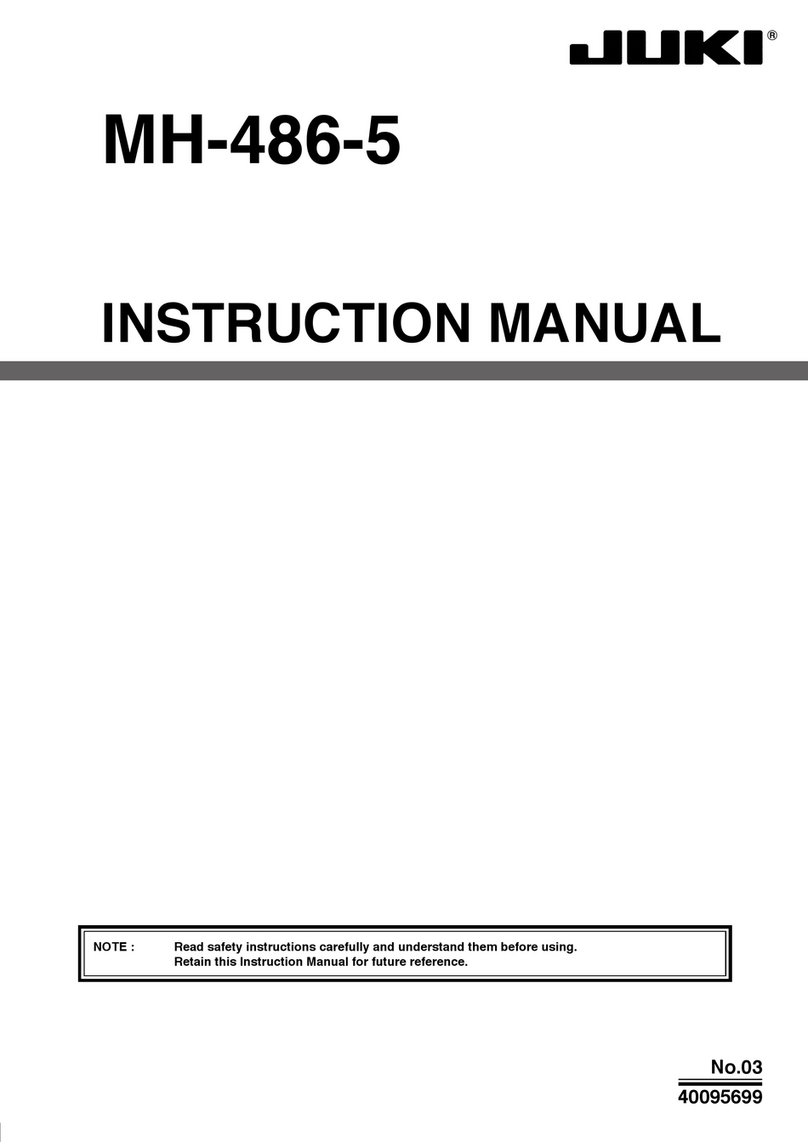
CONTENTS
I. SPECIFICATIONS......................................................................................................................1
1. Specications ................................................................................................................................................ 1
2. Modelclassicationaccordingtothebuttonsize ..................................................................................... 2
3. Shapeofbuttons ........................................................................................................................................... 2
II. NAME OF EACH COMPONENT ..............................................................................................3
III. INSTALLATION OF THE SEWING MACHINE AND PREPARATION OF THE OPERATION 4
1. Installationofthetableandstand ............................................................................................................... 4
2. Needleandthread ......................................................................................................................................... 4
3. Attachingtheneedle ..................................................................................................................................... 4
4. Threadingthemachine ................................................................................................................................. 5
IV. OPERATION ............................................................................................................................6
1. Operationofthesewingmachine ................................................................................................................ 6
2. Varioussewingmodes.................................................................................................................................. 6
3. Operationofthebuttonfeederunit ............................................................................................................. 8
4. Operation...................................................................................................................................................... 10
5. HowtosettheDIPswitchesandthedigitalswitches ............................................................................. 10
V. MAINTENANCE......................................................................................................................16
1. Tiltingthesewingmachinehead ............................................................................................................... 16
2. Positionofthebuttonclampjawlever...................................................................................................... 17
3. Adjustingthefeedplate.............................................................................................................................. 18
4. Adjustingthebuttonclampjawlever........................................................................................................ 18
5. Adjustingtheliftingamountofthebuttonclamp .................................................................................... 19
6. Adjustmentofthepressureoftheworkclampunit................................................................................. 20
7. Adjustmentofthewiper.............................................................................................................................. 20
8. Adjustmentofthewiperspring.................................................................................................................. 20
9. Installingthesavebuttonbar(accessorypart)........................................................................................ 21
10. Adjustmentofthebuttonfeederunitcontrolbox .................................................................................... 21
11. Detectingmechanismofthebuttonfeedercomponentsandtheadjustment ...................................... 22
12. Adjustingthefeedplateoftheindexunit ................................................................................................. 23
13. Replacingthebuttonfeedercomponentsandpositioningthem ........................................................... 24
14. Adjustingthevibrationofthebuttonfeeder............................................................................................. 25
15. Adjustingthefeederbowlcomponents .................................................................................................... 25
16. Howtoreplacethebuttons(onthebuttonfeederside) .......................................................................... 28
VI.ALARMNO.INDICATION(onthebuttonfeederunit(BR)side).......................................30
VII. TROUBLES AND CORRECTIVE MEASURES IN BR.........................................................31
VIII. OPTIONAL PARTS..............................................................................................................32
1. Kindsofthebuttoncarrier ......................................................................................................................... 32
2. Attachment................................................................................................................................................... 33
3. Others ........................................................................................................................................................... 34
